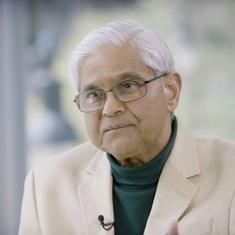A man who has led Australia to the World Cup triumph that kick-started an era of domination knows a thing or two about spotting talent. And after the defending champions outplayed their bitter rivals England at Lord’s, this is what Steve Waugh wrote in his column:
“Another to impress has been Alex Carey who is a hybrid of Michael Hussey and Michael Bevan. Carey plays with the perfect mixture of calmness and intent, assessing the situation and pouncing on any opportunities that present themselves in the frenetic pressure of the final overs. He shapes as a potential match-winner for Australia in the back end of the competition.”
Let that sink in: a hybrid of two of the greatest white-ball middle-order batsmen ever to play for Australia. Now that’s high praise.
And when Australia returned to the Lord’s on Saturday to face another great rival in New Zealand, Carey showed why one of the country’s greatest captains rates him so highly. His innings of 71 (off 72 balls) and a 107-run partnership with Usman Khawaja was the platform on which Australia’s 86-run victory was built.
A flamboyant innings
Australia’s first-wicket pair have been central to their success at this World Cup, with Finch and David Warner having scored 657 runs together in eight matches, including Saturday’s fixture, at a stunning average of 82.12. The law of averages caught up with them and it was a different story against the Black Caps, with both Finch (8) and Warner (16) dismissed cheaply. It was only the second time in the tournament that both Warner and Finch, who have three century and three half-century stands between them, were dismissed cheaply.
The first time it happened was against the West Indies when Steve Smith, along with Nathan Coulter-Nile, produced a rearguard that typifies the fighting spirit of Australia, especially at the World Cup. This time around, with the scoreboard reading 92/5, it was Usman Khawaja and Carey who pulled the team out of trouble.
While the No 3 batsman finished with the higher score, and Mitchell Starc blew New Zealand away with his pace (on his way to a historic third five-wicket haul at World Cup), there was a reason why Carey was adjudged player of the match. And no one really could argue with that.
The early collapse, ironically, allowed Khawaja to bat in his usual style without fear of being criticised for slow scoring. But it was the fellow left-hander Carey who added impetus to the innings and helped Australia’s run-rate consistently stay close to five an over. The wicket-keeper batsman hit 11 fours in 72 balls before he holed out off Williamson’s occasional off-spin. Sample this though: when Carey reached 50, he had hit nine fours, while Khawaja had just two hits to the fence by the time he got to the milestone.
So worried Williamson was by the left-hander’s proficiency playing spinners (especially the ball turning into him) he had to over bowl himself while under using his frontline spinners in Mitchell Santner and Ish Sodhi.
What Carey’s flamboyant innings did was quickly put the Black Caps under pressure when it should have been the other way around. With the insurance factor of having Khawaja at one hand, while not worrying about Australia’s lengthy tail in the absence of Coulter-Nile, Carey swept, cut and drove with purpose. His stroke-filled innings turned the tables at Lord’s and took Australia to a match-winning total. And then some.
Much like India, Australia have had a template to their success at this World Cup so far. And much like India, the chinks in Australia’s armour largely concern a misfiring (and often confused) middle order. There are question marks over their batting lineup even on days the top order fires, as they have ended up with below par scores. Glenn Maxwell’s shuffling up and down the order has not helped, as he was seen as the one dynamic batsman who can score freely.
And despite being played lower than he should be on a few occasions (like batting below Marcus Stoinis for instance), Carey has shown in this World Cup that he can be the solution to Australia’s middle order (and end-overs) troubles.
“Obviously the scoreboard will dictate my role in the game, if it’s trying to set up a target or try and get the side over the line. I really enjoy working with the other batter who is in,” had said during the tour of India earlier in the year.
That’s precisely what he did against Trans-Tasman rivals New Zealand, and with great success. The ovation from the Lord’s crowd was special when he walked back, because it was, indeed, a special innings.










